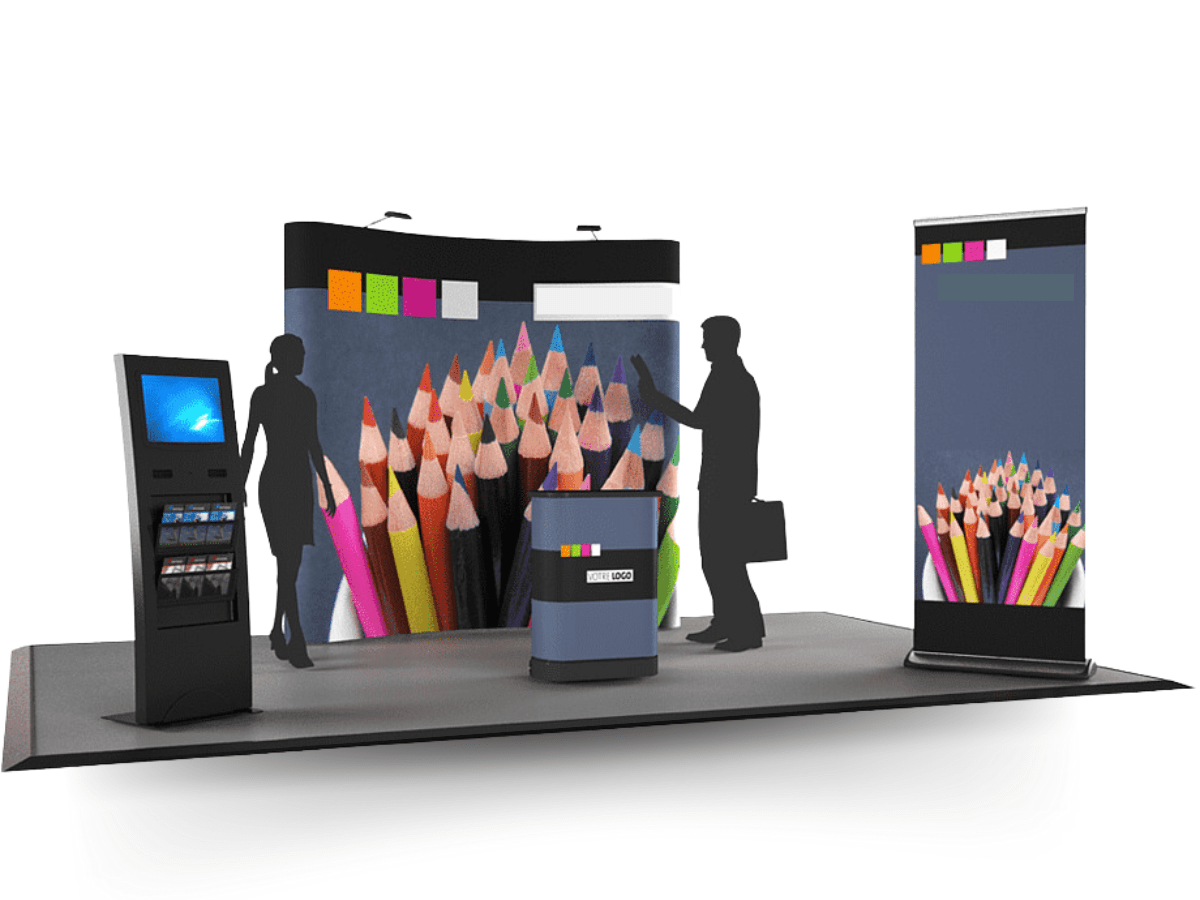

Although online shopping has soared over the last decade, in-store advertising still matters. Shoppers are likely to spend more while shopping in a brick-and-mortar store. They tend to make impulse purchases in-store rather than online.
Point of Sale displays or POS has been an effective method to tap into those impulsive buyers.
Point of sale displays are an effective marketing tool if designed and printed right. These promotional items can help increase sales, improve brand loyalty and awareness, and guide your target customers over the usage of products. An attractive and strategically placed POS display can help you stand out from competitors.
In this blog, we will learn how to create engaging retail point of sale displays to attract more customers which can boost your sales.
First thing first, choosing the right point of sale products for your brand is an important decision that requires careful consideration of various factors.
Not only does it accommodate your products, but also seamlessly integrates your brand’s identity, imagery, and brand message. After all, the display serves as a visual extension of your brand within the retail space.
For example, you are looking to design a snack company display for a supermarket. While a traditional shelf might be enough for budget-conscious strategies, a tailored, creatively designed display that reflects the brand’s vibrant colors and engaging imagery could boost the product’s presence, leading to increased sales through heightened visibility and consumer engagement.
While choosing a font and style for your POS retail display, paying attention to detail can help create a lasting impression on potential customers. The chosen font and style stand for the essence and personality of your brand.
For example, consider a boutique chocolate brand choosing a fancy and handcrafted script font for its POS display. This choice not only unleashes the artisanal nature of the chocolates but also tells about a sense of indulgence and luxury associated with the product.
First of all, you need to understand the psychology associated with the colors. Each color represents and evokes different emotions. For example, red is associated with excitement, danger, and a sense of urgency. Blue, on the other hand, represents calm, trust, and professionalism.
The point is here to pick the colors that can go well with your brand identity, product benefits, and target audience. The context and contrast of your POP displays is also an important factor to consider.
However, this may be just the tip of the iceberg if you go the extra mile to make your POS display stand out. For example, if the POS display is placed in a crowded or noisy environment, you might prefer bright or warm colors to catch attention. But, on the other hand, you might go for cool or muted colors to build harmony if the POS display is placed in a calm or relaxing setting.
Moreover, the readability of the fonts is the next factor to consider. For example, Serif fonts convey tradition and elegance, while sans-serif fonts evoke modernity.
Incorporating a touchscreen or tablet into your retail point of sale display can transform customer engagement. You let your customers access additional information about your products right at the point of purchase. The possibilities are endless, from displaying product features and advantages to offering interactive experiences that can catch attention and promote a solid connection with your brand.
Imagine a cosmetic brand having a touchscreen integrated into its POS, letting customers virtually try on various shades or get detailed information about ingredients, benefits, and directions to use. Such as technological enhancement not only improves the customer experience but also makes your brand innovative and customer-centric.
Or what about adding a QR code to the POS display?
Attractive designs can tell about your brand better. They provide a practical way to engage and connect with potential customers. Your marketing message should include key points like price reductions, competition, and product features, letting buyers make quick decisions.
No matter how appealing your magnetic display is, its impact is limited if it goes unnoticed. Strategically placing displays in high-traffic areas within the store increases visibility and the likelihood of customer interaction.
Endcaps, near checkout counters, and along main aisles are prime locations that ensure your display doesn’t get lost in the retail shuffle.
The right lighting can transform a POS display from ordinary to extraordinary. Experiment with different lighting techniques to highlight key products, create focal points, and evoke specific moods. Whether it’s subtle backlighting, spotlighting, or color-changing LEDs, strategic lighting can draw attention to your display and create a visually appealing ambiance.
Retail is dynamic, with seasonal changes and promotional events influencing consumer behavior. Ensure your POS displays are adaptable and easily updated to accommodate these shifts. Consider modular designs that allow for quick changes, enabling you to seamlessly transition between different campaigns without disrupting the overall aesthetic and appeal.
A visually stunning display should not compromise practicality and safety. Ensure that your display is easily accessible to customers, allowing them to interact without obstacles. Additionally, if incorporating technology, secure and conceal cables to maintain a polished appearance and minimize safety hazards.
The effectiveness of your POS display isn’t set in stone. Regularly analyze customer interactions, gather feedback, and track sales data to assess the impact of your display. Use this information to iterate and refine your approach, ensuring that your displays evolve to meet changing consumer preferences and market trends.
A well-executed retail Point of Sale display is a dynamic blend of art and strategy. It’s an opportunity to captivate customers, communicate brand values, and ultimately drive sales.
By understanding your audience, strategically placing displays, telling a cohesive brand story, incorporating technology, and considering factors such as lighting, accessibility, and multi-sensory experiences, you can create POS displays that not only attract customers but leave a lasting impression, fostering brand loyalty and elevating your retail presence.

Magnetic sheeting is a flexible material that can be magnetized on one side and often has an adhesive or printable surface on the other. It

Magnets come in various shapes and sizes, each designed for specific uses. Understanding the different shapes of magnets, their properties, and their applications can help

Magnets are a fascinating part of our everyday lives, from the magnets on our fridge doors to the powerful magnets used in advanced technology. There
Our magnet experts will help you get exactly what you need – custom or stock – in record time with great quality at a very competitive price.
Ⓒ 2024 - All Rights Are Reserved